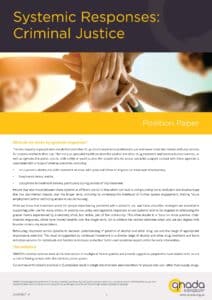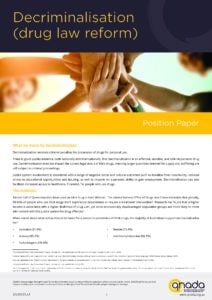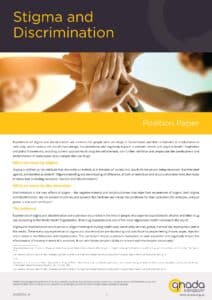Western Queensland Primary Healthcare AOD Capacity Development
13th March 2023QNADAfocus
From May 2021 to December 2022 QNADA embarked on a project supported by WQPHN and QNADA to facilitate AOD capacity development within primary healthcare services in Western Queensland. It goes without saying, Western Queensland is vast and sparsely populated, meaning there are unique challenges to health service access and delivery across this region. Western Queensland has a predominantly generalist health workforce and a limited availability of alcohol and other drugs (AOD) specialist services[1].
Primary healthcare services in the region have the potential to serve as an initial point of contact for people who use alcohol and other drugs and for those who have concerns with their use, by playing a critical role in facilitating appropriate care and follow up, particularly at an early stage[2],[3],[4]. The role of primary healthcare services can include informal conversations about a person’s relationship with substances through to formalised AOD screening and brief intervention, supporting referrals to specialist AOD services, and contributing to enhanced continuity of care[5],[6]. However, primary healthcare services often report a lack of confidence and skills to provide adequate AOD care, which is compounded by barriers such as stigma and discrimination and workforce shortage[7],[8].
QNADA, in partnership with external stakeholders, delivered and facilitated a range of activities throughout the project, including:
- providing individual primary healthcare practice support
- establishing regional service level network meetings
- coordinating the delivery of ASSIST (Alcohol, Smoking and Substance Involvement Screening Test) training
- reviewing alcohol and other drugs related HealthPathways
- delivering an AOD in primary healthcare toolbox talk
- drafting an easy to use information resource for primary healthcare practitioners responding to AOD issues
- promoting existing resources (eg Adis 24/7, ADCAS, Insight).
The project had a small number of participants however key findings from the project evaluation indicated an overall positive impact. For example, an increased level of confidence was found in using alcohol and other drug specific screening and assessment tools (e.g. ASSIST), delivering brief intervention to patients, and matching referrals to patient needs. An increased level of knowledge was also found in some key alcohol and other drug concepts (eg harmful drug use, alcohol and other drug dependence), and in alcohol and other drug information services (eg HealthPathways, Alcohol and Drug Clinical Advisory Service). In addition, several enablers for primary healthcare services to deliver good practice AOD responses in Western Queensland were identified. At the service level, these included having accurate and informed knowledge around patterns of alcohol and other drug use, the range of AOD treatment types, and local referral options, and maintaining collaborative relationships between key workers among services. At the system level, having face to face engagement and networking opportunities (eg network meetings) for workers, and a stable and engaged workforce (eg consistent staffing within a practice) is also likely to contribute to better provision of alcohol and other drug care.
However, at a systems level, the lack of alcohol and other drug specific MBS item numbers, high workforce turnover, and excessive distance between services all contribute to challenges for primary healthcare services in providing AOD support. These issues will continue to inform QNADA’s advocacy into the future as part of our ongoing work with other state and territory partners and the national AOD peak, Australian Alcohol and other Drug Council (AADC).
In the short to medium term, there are opportunities to address a range of barriers identified in the evaluation including:
- further strengthening linkages between primary healthcare services and their locally available specialist alcohol and other drug treatment services
- continuing to address stigma that is associated with illicit drug use and negative connotations around seeking alcohol and other drug treatment, which created challenges for both providing and seeking support
- addressing concerns around lack of anonymity in small towns in order to increase help seeking
- responding to specific concerns around the normalisation of high quantity and frequency alcohol use.
In future QNADA hopes to continue our activities supporting primary healthcare services in the Western Queensland region by:
- continuing to facilitate local workforce linkage across the Western Queensland region through AOD focused service level networks.
- continuing individual practice engagement to enhance alcohol and other drug responses in primary healthcare services.
- facilitating and supporting ongoing alcohol and other drug related professional development and upskilling opportunities for primary healthcare services, with a focus on staff most likely to provide an AOD response (eg practice nurses).
While QNADA is pleased with the progress we’ve made in this space, this represents a first step to enhancing AOD responses in primary healthcare settings. We’d like to thank WQPHN for their support in funding this project and all the service providers and project partners who participated. Thank you!
————————————————–
[1] Western Queensland Primary Health Network, “A Five-Year Plan (2021-2026) to Improve Mental Health, Suicide Prevention and Alcohol and Other Drug Treatment Services in Western Queensland,” (2021).
[2] Queensland Mental Health Commission, “Achieving Balance 2022-2027: The Queensland Alcohol and Other Drugs Plan,” (2022).
[3] Queensland Health, “Better Care Together: A Plan for Queensland’s State-Funded Mental Health, Alcohol and Other Drug Services to 2027,” (2022).
[4] Michala Kowalski and Liz Barrett, “Engaging General Practice and General Practitioners in Alcohol and Other Drug Treatment,” in Drug Policy Modelling Program Monograph (University of New South Wales, 2020).
[5] Ibid.
[6] Queensland Health, “Better Care Together: A Plan for Queensland’s State-Funded Mental Health, Alcohol and Other Drug Services to 2027.”
[7] Western Queensland Primary Health Network, “A Five-Year Plan (2021-2026) to Improve Mental Health, Suicide Prevention and Alcohol and Other Drug Treatment Services in Western Queensland.”
[8] Kowalski and Barrett, “Engaging General Practice and General Practitioners in Alcohol and Other Drug Treatment.”




